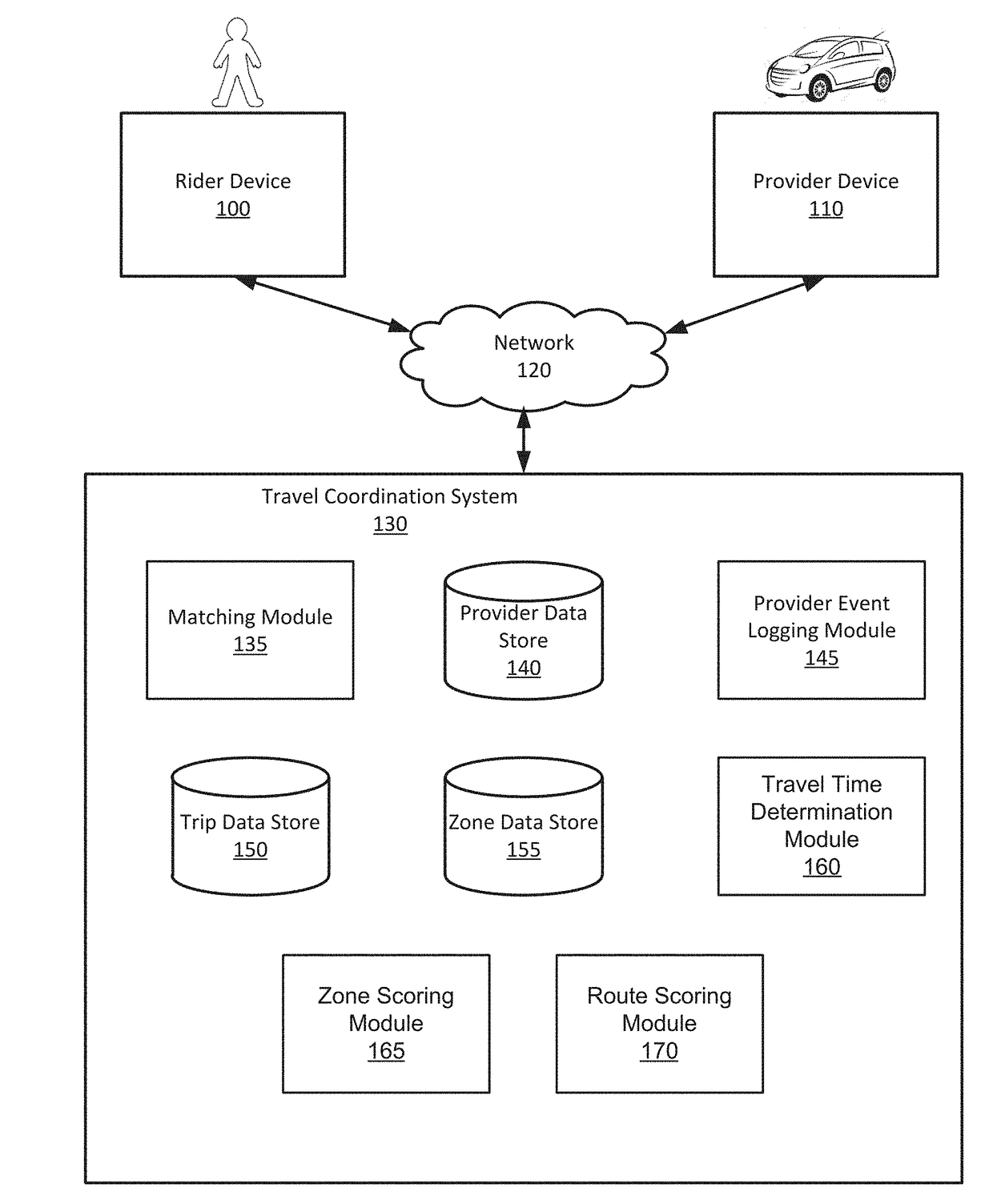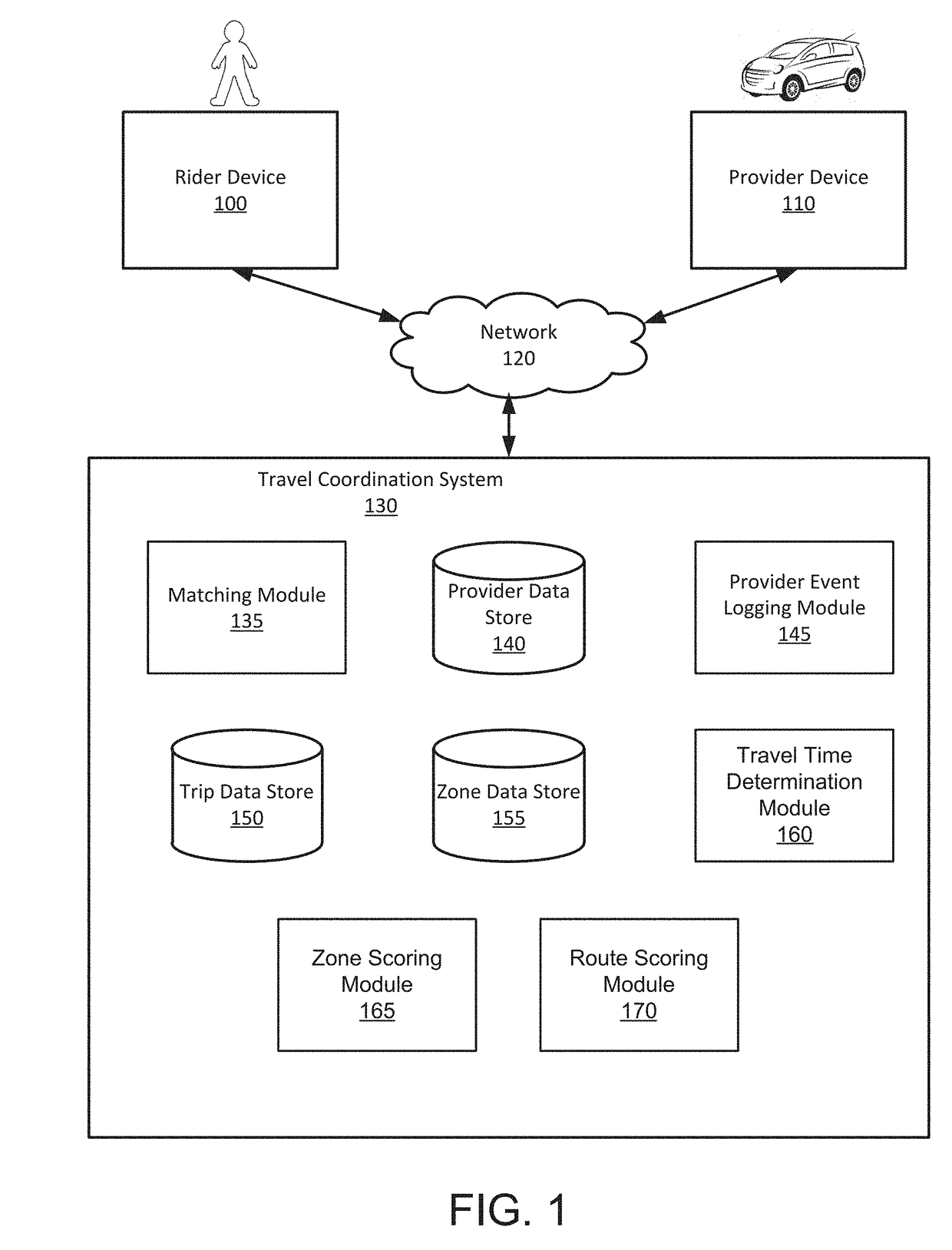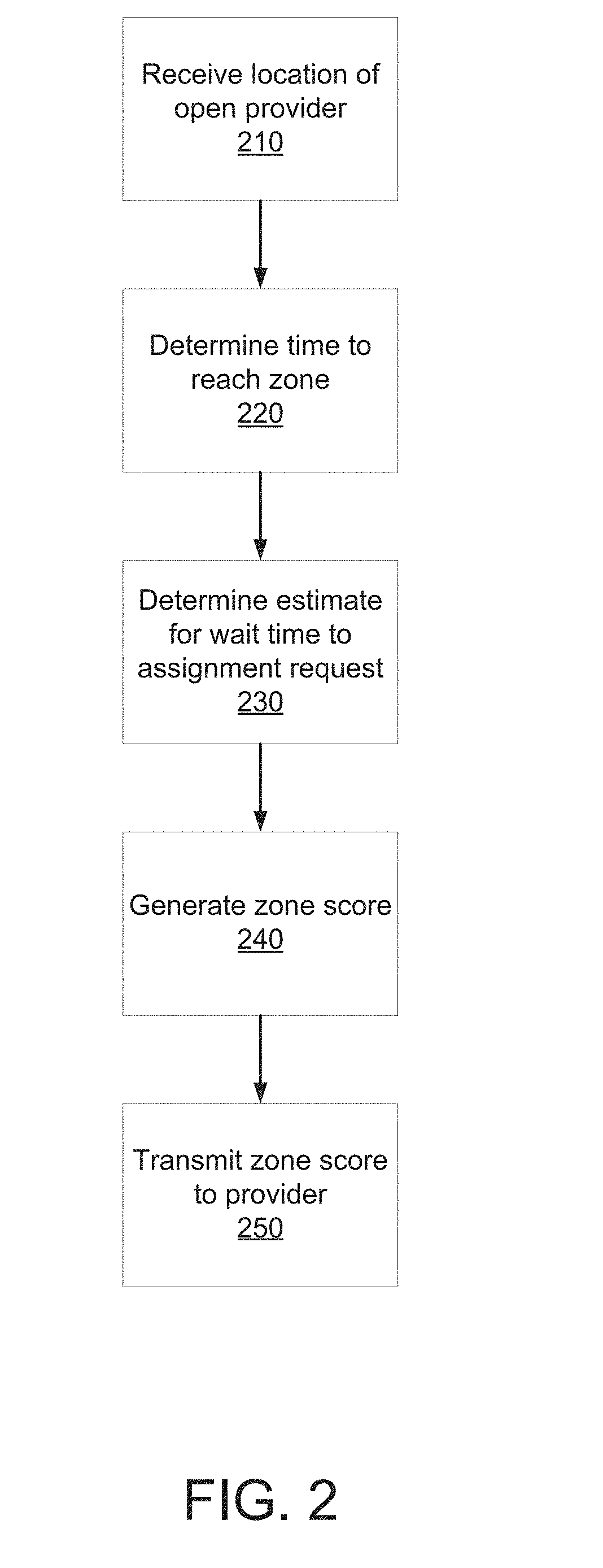Selecting a route to a destination based on zones
a technology of zone selection and route selection, applied in the field of travel coordination systems, can solve the problems of ineffective methods, less efficient overall travel coordination system, and providers who may not effectively position themselves, and achieve the effect of reducing time and increasing the likelihood of servicing a rid
- Summary
- Abstract
- Description
- Claims
- Application Information
AI Technical Summary
Benefits of technology
Problems solved by technology
Method used
Image
Examples
Embodiment Construction
[0017]Overview
[0018]FIG. 1 illustrates a system environment and architecture for a travel coordination system 130, in accordance with some embodiments. The illustrated system environment includes a rider device 100, a provider device 110, a network 120, and a travel coordination system 130. In alternative configurations, different and / or additional components may be included in the system environment. The travel coordination system 130 provides travel coordination services between a number of riders each operating a rider device 100 and a number of providers each operating a provider device 110 in a given region.
[0019]By using the rider device 100, the rider can interact with the travel coordination system 130 to request a transportation service from a current location (or specified pickup location) to a destination location. While examples described herein relate to a transportation service, the travel coordination system 130 can enable other services to be requested by requesters,...
PUM
 Login to View More
Login to View More Abstract
Description
Claims
Application Information
 Login to View More
Login to View More - R&D
- Intellectual Property
- Life Sciences
- Materials
- Tech Scout
- Unparalleled Data Quality
- Higher Quality Content
- 60% Fewer Hallucinations
Browse by: Latest US Patents, China's latest patents, Technical Efficacy Thesaurus, Application Domain, Technology Topic, Popular Technical Reports.
© 2025 PatSnap. All rights reserved.Legal|Privacy policy|Modern Slavery Act Transparency Statement|Sitemap|About US| Contact US: help@patsnap.com



